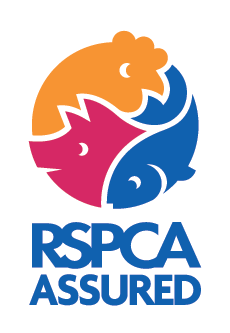What are farrowing crates?
Pig farrowing crates are barred metal crates within a pen where pregnant sows are placed before giving birth. Farrowing crates prevent the sows from turning around and only allow them to move a little forward and backwards. Sows are kept in crates for around five weeks, each litter. When you consider that sows farrow 2.3 times each year, that means they are kept confined in this way for 80 days each year, nearly a quarter of their adult breeding lives.
Alongside the farrowing crate, within the pen, there is an area called a “creep” that the sow’s piglets can move into. This is often heated to attract the piglets and stop them from lying next to the sow. The piglets are still able to reach the sow’s teats to suckle, but when they are in the creep, she is prevented from being able to clean or interact with them.

What is a farrowing crate used for?
After giving birth to piglets, there is a possibility that the sow will crush them. A fully-grown sow can weigh around 200kg to 300kg, a newborn piglet, on the other hand, typically weighs less than two kilos. If the sow accidentally lay down or stepped on one of her newly born piglets, she could injure or even kill it.
The bars of the farrowing crate are placed so that the piglets can escape underneath them when the sow stands up and lies down, reducing the risk of them being harmed.
Why do sows crush their piglets?
When the sow lies down to rest or to suckle her young, she may inadvertently crush one of them due to her large size in comparison with the piglets and the difficulty she has in lying down slowly and gently.
What are the advantages of farrowing crates to farmers?
Farrowing crates are a more economical way of keeping farrowing sows indoors since they take up less space than farrowing pens that allow sows to move freely during and after giving birth. It is also easier for farmers to look after the sows without fear of being injured by a mother protecting her young. Farrowing crates are also thought to reduce the possibility of accidental piglet mortality and, therefore, increase production and economic return. However, this is not always the case.
Why are farrowing crates a welfare concern?
Farrowing crates are a major concern to the RSPCA because they provide so little space, preventing sows from being able to turn around freely and build their nests. Even if nest-building material is provided, which it sometimes isn’t, they do not have room to carry out this natural behaviour. Sows are usually confined from a few days before giving birth until their piglets are weaned at around four weeks old. Not allowing sows to behave naturally can make them frustrated and stressed.

Are farrowing crates legal?
Despite a petition (closed in November 2018) on the UK Gov website that aimed to outlaw their use, farrowing crates are still legal in the UK. Today, approximately 60% of UK sows are kept in farrowing crates around the time of giving birth and nursing. None of these are on RSPCA Assured farms, where farrowing crates are strictly prohibited.
Where are farrowing crates banned?
The routine use of farrowing crates has been banned in Sweden, Norway and Switzerland, and these remain the only countries where farrowing crates are prohibited. Legislation has passed in Germany which allows for temporary confinement in crates. While Austria has also pledged against using farrowing crates, similar to Germany, temporary confinement is still permitted. New Zealand has passed a law to phase out the use of farrowing crates by 2025 but is facing issues with industry transition.
How long are sows kept in farrowing crates?
Pregnant sows are usually placed in farrowing crates about five days before they are due to give birth, and they are kept in them until the piglets are weaned at approximately 28 days of age.
Are there viable alternatives to using farrowing crates?
Sows on the RSPCA Assured scheme remain unconfined at farrowing, either indoors in individual pens with more space to move about and material such as straw to root around in and build nests with or outdoors in paddocks or runs with access to a dry, bedded, comfortable shelter.
What is the difference between gestation crates and sow stalls?
Sow stalls can also be known as gestation crates. These are just different names for the same thing.
What is the difference between farrowing crates and sow stalls?
A farrowing crate is used to confine the sow from up to a week before giving birth, generally until the piglets are weaned at around four weeks. Farrowing crates are restrictive pens that prevent the sow from turning around, and which aim to reduce the risk of the sow lying on and crushing her newborn piglets. Farrowing crates are legal and a common practice in the UK and Europe.
Sow stalls are individual, narrow stalls in which the sows are housed throughout their pregnancy (about four months) until they are about to give birth. Sow stalls, which prevent the sows from turning around and allow very little movement forward or backwards, have been banned in the UK since 1999 but are still used in many countries around the world.
What does the RSPCA say about farrowing crates?
The RSPCA welfare standards for pigs, which must be met throughout a pig’s life for any products, including sausages, bacon and ham, from that pig to be labelled RSPCA Assured, don’t allow pigs to be kept in farrowing crates. Sows must be given room to turn around freely at all times and bedding such as straw for comfort and to allow them to build nests.

